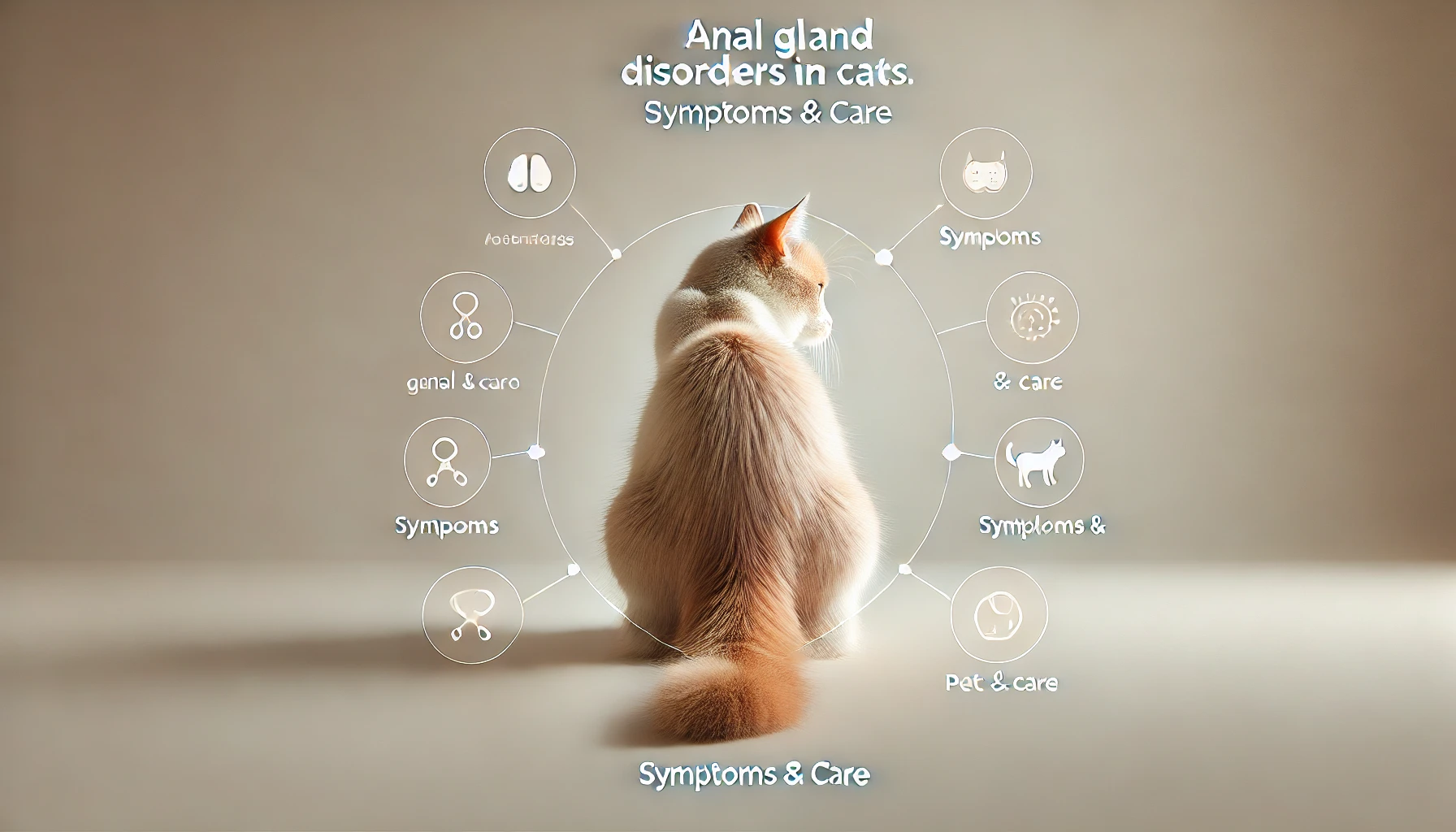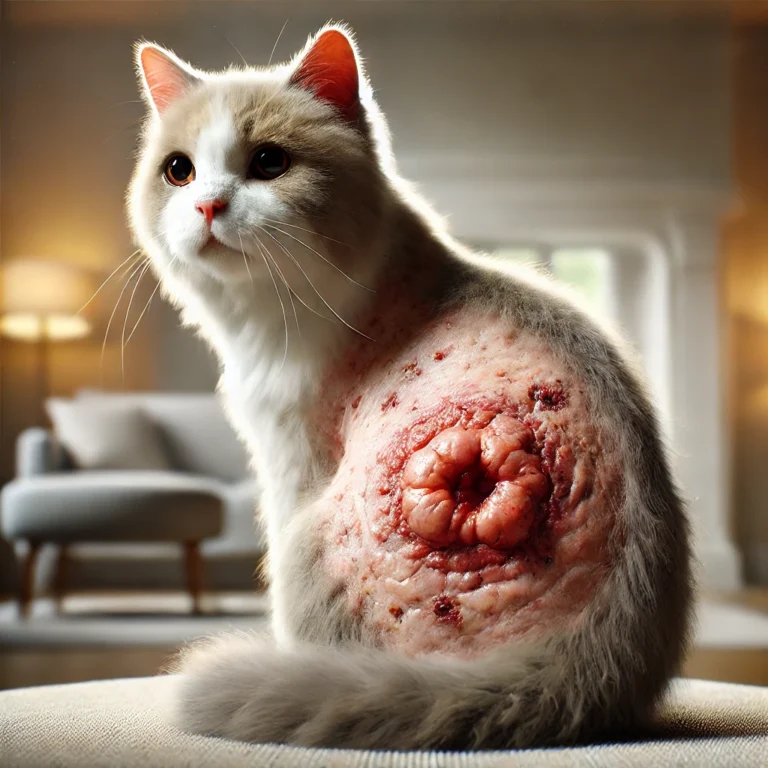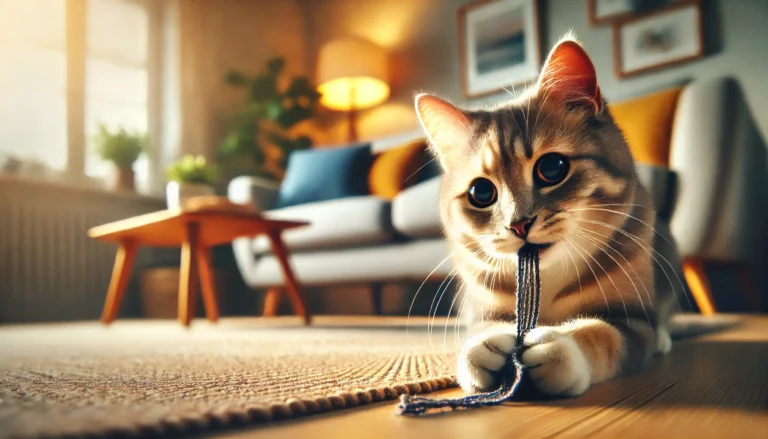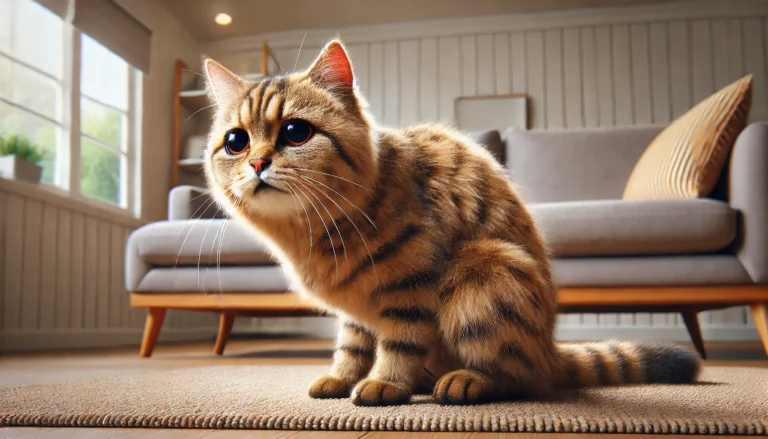Anal Gland Disorders in Cats

Introduction
Anal Gland Disorders in Cats are a relatively rare but important health issue that can cause significant discomfort for your feline companion. Located on either side of the anus, the anal glands (or anal sacs) are responsible for secreting a fluid used for marking territory. In some cases, these glands can become impacted, infected, or even rupture, leading to serious health problems.
This guide provides an in-depth look into the causes, symptoms, and treatments of an Anal Gland Disorders in Cats. By understanding how to recognize early signs and knowing the available treatment options, you can help ensure your cat stays healthy and comfortable.
Chapter 1: Understanding Anal Glands in Cats
What Are Anal Glands?
Anal glands, also referred to as anal sacs, are two small, scent-producing sacs located at the 4 o’clock and 8 o’clock positions near your cat’s anus. These glands naturally secrete fluid when a cat defecates, marking their territory. While they are more commonly discussed in dogs, cats also have anal glands, though problems with them are less frequent.
Why Do Cats Have Anal Glands?
In the wild, cats use the secretion from their scent glands to communicate with other animals. These glands release a smelly substance that tells other animals about a cat’s presence. Although domesticated cats don’t rely on scent marking in the same way, the glands still play a role in their natural behavior.
Chapter 2: Types of Anal Gland Disorders in Cats
1. Impaction of the Anal Gland Disorders in Cats
Impacted Anal Gland Disorders in Cats occur when the glands fail to express naturally, causing the fluid to build up and become thick. This results in discomfort and swelling, as the fluid can no longer escape easily. Impaction is often the first step that leads to other serious issues, such as infections or abscesses.
2. Infection of the Anal Gland Disorders in Cats
When impacted Anal Gland Disorders in Cats are left untreated, bacteria can grow in the trapped fluid, leading to an anal gland infection. Signs of infection include redness, swelling, and anal gland discharge, which often has a foul smell. If not treated, an infection can worsen and form an abscess.
3. Anal Gland Rupture and Abscess
In severe cases, a ruptured Anal Gland Disorders in Cats can occur when an infection causes the gland to swell and burst. This leads to an open wound, which is painful and prone to further infection. A ruptured anal sac in cats requires immediate veterinary treatment, including cleaning the wound and possibly prescribing antibiotics.
do you know
UTI in Cats (Urinary Tract Infections) can affect their kidneys, bladder, ureters, and urethra. Recognizing the symptoms and understanding treatment options is essential for maintaining your cat’s health.
Chapter 3: Causes of Anal Gland Disorders in Cats
1. Diet and Stool Consistency
A cat’s diet plays a significant role in maintaining healthy anal glands. Cats that produce soft stools due to a poor diet are more likely to have blocked anal glands because the soft stool doesn’t put enough pressure on the glands to express the fluid naturally. A high-fiber diet may help keep the stools firm, allowing the glands to empty as they should.
2. Obesity and Lack of Activity
Overweight cats are more prone to anal gland disorders because the excess fat around their anal region can interfere with the normal expression of the glands. Additionally, inactivity weakens the muscles that help express the glands, leading to blocked anal glands in cats.
3. Allergies and Inflammation
Chronic skin or food allergies can lead to inflammation throughout the body, including the anal glands. Inflamed anal glands are more likely to become impacted or infected, especially in cats that suffer from regular bouts of diarrhea or soft stools as a result of their allergies.
Chapter 4: Recognizing Symptoms of Anal Gland Disorders in Cats
1. Scooting and Butt Dragging
Scooting is one of the most noticeable signs that your cat’s anal glands are causing discomfort. When a cat drags its rear across the floor, it is often trying to relieve the pressure or itching sensation caused by impacted anal glands or irritation around the anus.
2. Excessive Licking and Biting
Cats experiencing discomfort from their anal glands may begin to excessively lick or bite around their anal area. This behavior is often seen in conjunction with scooting and is a sign that the anal glands need to be expressed or that there may be an infection present.
Chapter 5: Diagnosis of Anal Gland Disorders in Cats
Veterinary Examination
When a cat shows signs of anal gland problems, a veterinarian will conduct a thorough examination of the anal area. In most cases, they will try to manually express the glands to check for impaction or infection. The vet may also take a sample of the fluid to test for bacteria if an infection is suspected.
Additional Diagnostic Tools
In more severe cases, such as when an abscess or anal gland rupture is suspected, imaging tools like X-rays or ultrasounds may be used to assess the extent of the infection or damage. This ensures that the appropriate treatment is provided.

Chapter 6: Treatment Options for Anal Gland Disorders in Cats
1. Manual Expression
If the anal glands are impacted, a veterinarian or trained professional can express the anal glands manually. This procedure involves gently squeezing the glands to release the built-up fluid. For cats prone to recurrent impaction, regular expression may be recommended as a preventative measure.
2. Antibiotics and Medication
In cases of infection, antibiotics are often prescribed to treat the anal gland infection. If there is an abscess, your vet may also prescribe pain relief and anti-inflammatory medications to help reduce swelling and discomfort.
3. Surgery for Severe Cases
For cats with chronic anal gland problems or recurring abscesses, surgical removal of the anal glands may be recommended. While this is considered a last resort, it can permanently solve the issue for cats that are constantly suffering from gland impaction or infections.
4. Home Remedies and Aftercare
After a gland infection or ruptured anal sac, warm compresses can help reduce swelling and promote healing. Your vet may also recommend cleaning the area with a mild antiseptic. Always follow your vet’s advice when dealing with a ruptured anal gland or abscess to prevent further complications.
Chapter 7: Preventing Anal Gland Disorders in Cats
1. Maintaining a Healthy Diet
Feeding your cat a high-fiber diet is one of the best ways to prevent anal gland impaction. Firm stools put enough pressure on the glands to express them naturally during defecation, reducing the likelihood of blockages.
2. Regular Vet Check-ups
Routine vet visits are important for early detection of anal gland problems. Cats that have had impacted anal glands in the past may benefit from regular gland expressions by a professional to prevent future issues.
3. Proper Weight Management
Keeping your cat at a healthy weight will reduce the risk of blocked anal glands and other health problems. Regular exercise and a balanced diet will help your cat maintain muscle tone, which is important for natural anal gland expression.
Chapter 8: When to See a Vet
Signs of Severe Anal Gland Problems
If your cat is showing signs of severe pain, excessive licking, or if you notice discharge from the anus, it’s time to see a vet. These symptoms often indicate that the anal glands are infected or that an abscess has formed.
Emergency Situations
A ruptured anal gland is an emergency that requires immediate veterinary attention. The rupture can cause significant pain and may lead to more serious infections if not treated promptly.
Conclusion
Anal Gland Disorders in Cats, though less common than in dogs, can still cause significant discomfort and health problems. By understanding the causes, symptoms, and treatment options for these disorders, you can help your cat avoid pain and maintain a healthy, happy life.
Regular vet visits, a high-fiber diet, and attention to your cat’s overall health are key to preventing anal gland issues. If you suspect your cat may be suffering from an anal gland disorder, it’s essential to consult your veterinarian to ensure the problem is addressed before it becomes more serious.
With proper care and attention, most cats can recover fully from anal gland disorders and avoid further complications in the future.
What is perianal disease in cats?
Perianal disease in cats refers to a range of conditions affecting the area around the anus. These can include infections, abscesses, tumors, or anal gland impactions. It’s a relatively uncommon category of diseases in cats compared to dogs.
What are the perineal glands in cats?
Cats don’t have perineal glands; however, they do have anal sacs or glands, which are small glands located on either side of the anus. These glands secrete a fluid that is used for scent marking and identification.
What are the symptoms of perianal disease?
Symptoms of perianal disease in cats can include licking or biting at the anal area, scooting on the ground, a foul smell, visible swelling or lumps near the anus, difficulty defecating, and possibly visible pus or blood.
Is perianal disease curable?
The curability of perianal disease depends on the underlying cause. Many forms, like infections or abscesses, can be treated effectively with medication or surgery. However, more serious conditions such as cancer might have a more guarded prognosis.
How to treat cat hemorrhoids?
Hemorrhoids are actually rare in cats. What might appear to be hemorrhoids could be prolapsed rectal tissue, tumors, or swollen anal glands. Treatment depends on the underlying cause but may include anti-inflammatories, antibiotics, or surgical intervention.
Why are my cats glands swollen?
Swollen glands around the anus could indicate impacted or infected anal glands. This can occur when the glands do not empty properly and become clogged, leading to discomfort and potential infection.
Why are my cats mammary glands swollen?
Swollen mammary glands in cats can be due to several reasons including mastitis, mammary hyperplasia, or mammary tumors. It’s important to have a veterinarian evaluate the swelling to determine the cause and appropriate treatment.
How to empty a cat’s glands?
Emptying a cat’s anal glands should be done by a veterinarian or an experienced technician. The process involves gently expressing the glands to release the built-up fluid. This can be necessary if the cat is unable to naturally empty the glands through defecation.






